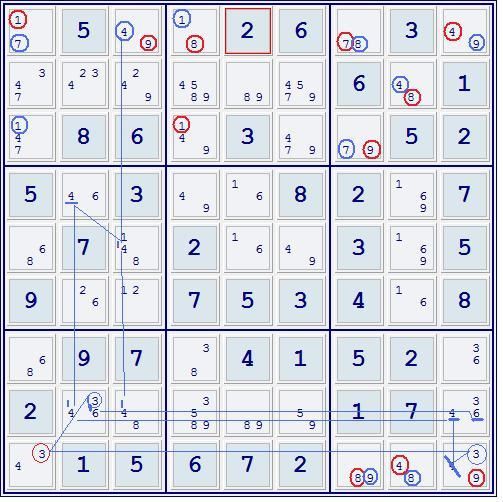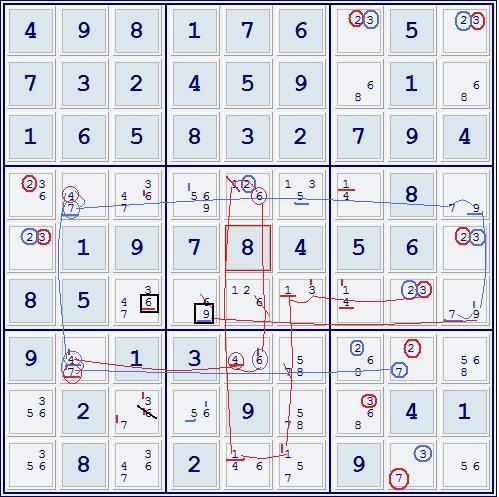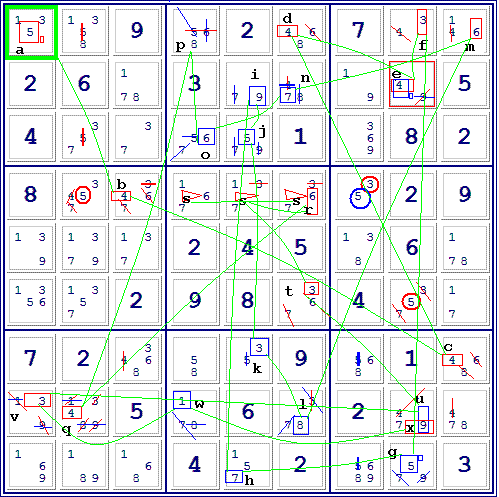I first introduced this technique on the Eureka Forum in September 2006, under the name CCW (Comparison of Conjugate Worlds). After that, Bill Richter started calling it CW - a practice I have been aping myself lately.
That forum is now defunct and my work on it lost. And there seems to be no description of CCW extant anywhere today.
As I am now using this technique regularly on this forum, I decided to remedy the lack of definitive literature in this post.
How CW works:
I've used the puzzle "February 25, 2015", in the Puzzles Section, as an example to illustrate the use of CW.
First, a conjugate pair is chosen, e.g. 111 and 711, using thick red and blue circles to show they are conjugate at start. All digits conjugate to these are added to the conjugate net, arriving at a blue set of equivalent digits (all true or all false) and a red set. "RR111" refers to a member of the red set.

Next, (see diagram), B442 means 442 is true if Blue is true; this single letter B also refers to the following digits, in this case -4r8c23 and 489. Observe how these facts are denoted in the picture: by '4 and 4 in blue.
d499 means delete 499.
BB413 means 413 has now become conjugate Blue: thin circles are used to show conjugates added to the original net.
eRR means Red is established as True. (here one might instead write e111, meaning that 111 is true)
BB413,B442,-4r8c23,489*.
d499(RR999),BB399,RR391,BB382,B-682,689*, eRR,stte.




